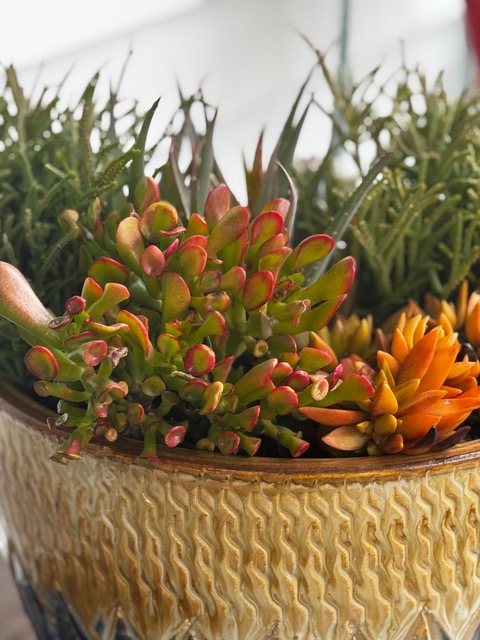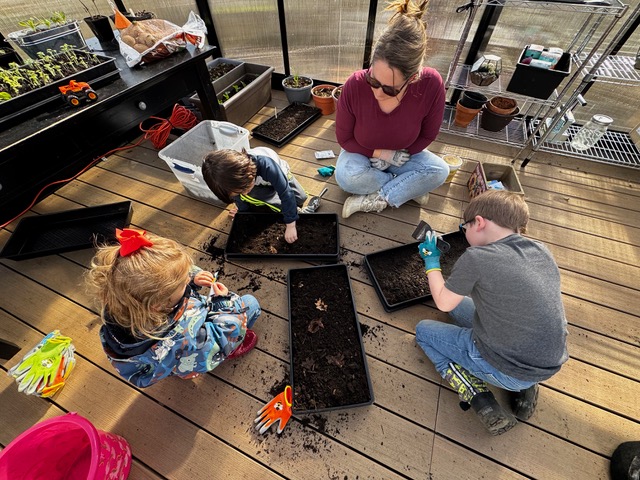Should You Save Old Potting Soil? The Answer May Surprise You…

This post contains Amazon affiliate links. As an Amazon Associate, I earn from qualifying purchases at no additional cost to you. This helps support my blog and allows me to continue creating content. Thank you for your support!
As a preschool gardening teacher, I see little hands digging, planting, and discovering the magic of soil every day. It’s incredible how much life is held within a handful of dirt! But what happens to the soil in our planting containers after a season of growth? Should we toss it out and start fresh? Or can we breathe new life into it? Let’s dig into the dirt (literally!) and find out!
Why You Might Not Want to Reuse Old Potting Soil

Some gardeners hesitate to reuse old soil because it may be depleted of nutrients or harbor pests and diseases. Here are a few reasons why people avoid it:
- Nutrient Loss: Plants are like little soil vampires—they suck up all the good stuff! After a full season, the soil may be lacking essential nutrients.
- Compaction & Drainage Issues: Over time, soil becomes compacted, making it harder for roots to spread and water to drain properly.
- Pests & Diseases: If your plants struggled with disease or pests, their remnants might still be lurking in the soil, waiting to strike again!
Why You SHOULD Reuse Old Potting Soil

Even though there are some challenges, there are plenty of good reasons to reuse old soil!
- Sustainability: Soil is a precious resource! Throwing it away contributes to unnecessary waste.
- Cost-Effective: Buying fresh potting mix every season adds up. Rejuvenating old soil saves money.
- Teachable Moments: In our preschool garden, we love to teach kids about nature’s cycles. Just like composting, revitalizing soil is a great way to show how nothing in nature goes to waste!
How to Refresh and Reuse Old Potting Soil

If your old potting soil is looking tired and worn out, don’t worry! With a little love, it can be as good as new. Here’s how:
- Fluff it Up – Empty the soil into a wheelbarrow or large container and break up any clumps. If the soil is compacted, add some fresh peat moss or coconut coir to improve texture.
- Remove Debris – Pull out any old roots, sticks, or leftover plant material.
- Bake Out the Baddies – If you’re worried about pests or diseases, spread the soil out in the sun for a few days. The heat will help eliminate harmful pathogens.
- Neem Cakes help kill the pests organically
- Feed the Soil – Mix in compost, worm castings, or a balanced organic fertilizer to replenish nutrients.
- Worm Castings are a great way to restore beneficial microbes https://amzn.to/4izEpuz
- Boost Microorganisms – Healthy soil is full of life! Adding mycorrhizal fungi or a handful of garden compost can restore beneficial microbes.
- Mycorrhiza Rooting Powder https://amzn.to/4c3C0py
- Check the Drainage – If the soil feels too heavy, mix in some perlite or sand to improve drainage.
- Perlite is a great way to increase drainage
- Mix with Fresh Soil – If possible, blend your rejuvenated soil with some new potting mix for an extra boost.
Soil: A Precious Resource Worth Protecting

Here’s something many people don’t realize—soil is a nonrenewable resource! It takes hundreds, even thousands, of years for nature to build just an inch of healthy topsoil. But with industrial farming, deforestation, and urban development, we’re losing it at an alarming rate. As gardeners, we have a unique opportunity to be stewards of the earth by conserving and nurturing the soil we have. When we reuse and replenish soil, we’re not just helping our gardens—we’re helping the planet.
So next time you look at your tired old container soil, don’t toss it—revive it! Whether you’re growing veggies, flowers, or a preschool garden filled with tiny green thumbs, you’ll be giving the earth (and your plants) a second chance to thrive. Let’s be brave, try new things, and get our hands dirty for a better world!









